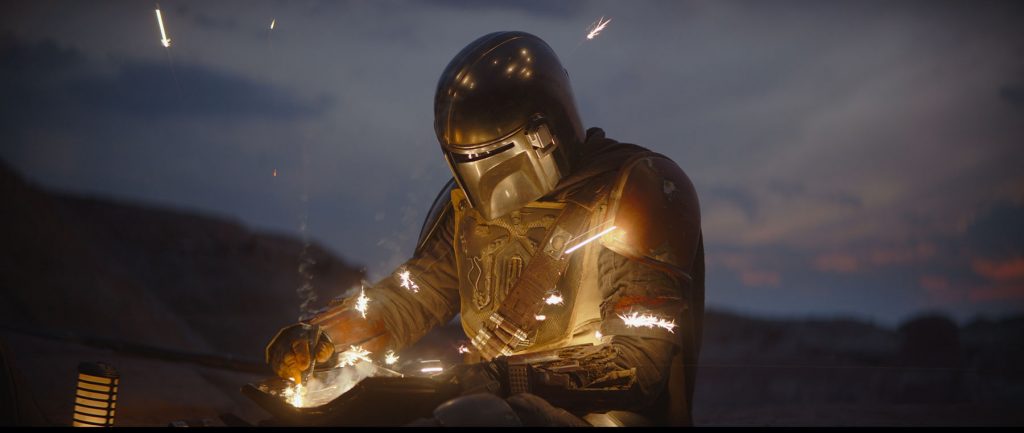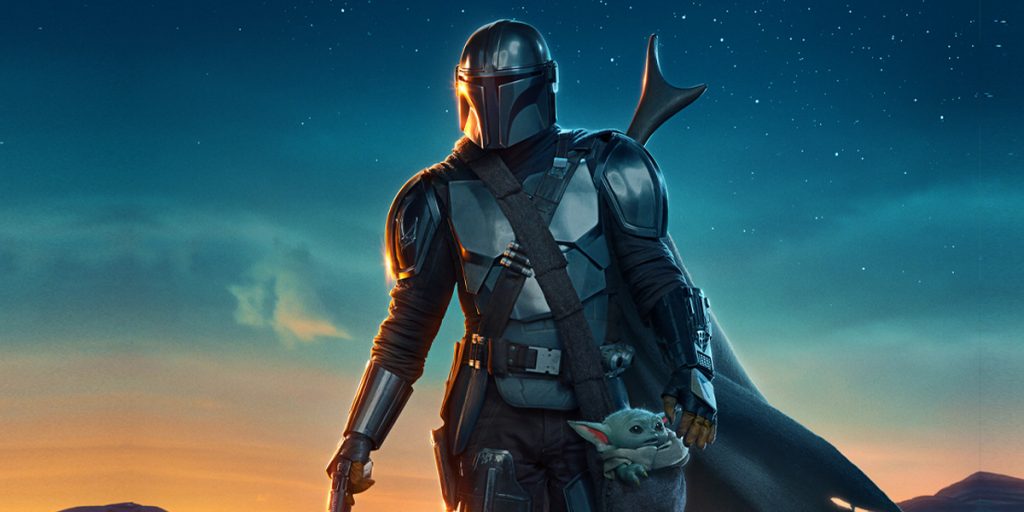The Mandalorian is one of television’s great joys – an unpretentious love letter to classic genre filmmaking that embraces the best of Star Wars.
For Star Wars fans of a certain age, the greatest thing about George Lucas’ saga is not Jedi mysticism nor stories of destined heroes; rather, it is the sheer breadth of the world the stories occupy. The brilliance of George Lucas’ vision is a world that feels utterly lived in on the periphery – smugglers and bounty hunters give the impression of lives fully lived despite limited screen time. The Mandalorian, Disney+’s banner series and a surprise Emmy nominee for Best Drama Series, returns this week for season 2 and so I thought it was worth the time to discuss what worked so well about the show’s first season.
The Mandalorian’s premise is so blessedly simple: let’s follow a bounty hunter and see what he does. He’s certainly not a villain, but he is also of questionable moral integrity. Minimalist exposition establishes our protagonist has done some things he is not proud of, and the life of a child gives him a chance to show where his morals kick in. That the story is set on the fringes of the main narrative thrills. The Empire is a shattered factional mess; the New Republic (nee, The Rebellion) elicits little more than a snigger.
The production values are simply astonishing. For the most part, the show looks like a big budget theatrical film. The CGI is effectively deployed and largely credible. The direction is uniformly excellent: from big screen auteurs like Taika Waititi to newcomers like Bryce Dallas Howard, the show manages to maintain a consistent visual palette while allowing each director leeway to make their own mark on the tone of the material. Perhaps the show’s most effective original creation is Ludwig Goransson’s score. Goransson, who may be Oscar bound for his work on Tenet this year, crafts an absolutely iconic score that feels similarly epic to John Williams’ iconic work, but exists in a world all its own. The reliance on more offbeat instruments truly gives the music the feel of an alien western.

The Mandalorian fills its episodes with characters who seem fully realized with breathtaking brevity. Even the season’s least effective episodes introduce memorable characters: a rival bounty hunter played with gravitas by Ming-Na Wen is gamely introduced by showcasing her tactical and combat prowess. Her construction of a trap for her pursuers quickly and effectively sets her up as a threat, her limited dialogue establishes the character as a woman who has lived a life out on the fringes of the galaxy. The brilliant off-the-beaten-path casting runs strong throughout. 80s stalwart Carl Weathers and MMA fighter Gina Carano give memorable and effective turns. Comedian Bill Burr musters more interest in about 6 minutes of screen time than anyone in The Rise of Skywalker. Werner Herzog and Giancarlo Esposito make for memorable exposition-heavy heels.
The show embraces an episodic structure quite rare in big budget television production. It’s very rare to be able to refer to “the one with the heist” and have most viewers recall with specificity which episode you’re referencing. The episodic nature pays tribute to the Western adventure stories that clearly inspire the stories. They also represent a blessed lack of pretense in “prestige television.” For once, something that allows you to feel joy for 35 minutes and come back again the following week.
Countless digital words have been spilled on Baby Yoda’s appeal, and I’m certainly not above admitting that my work coffee cup features the character, but I do want to point out one blessedly uncynical and uncorporate thing about it. It is, of course, an absolutely brilliant puppet, perhaps the best ever put to film (“heartbreakingly beautiful”, as Werner Herzog described it), and a brilliant marketing coup. But Disney, and show creator John Favreau, chose to protect the secret of The Child until the show’s release. Instead of a deluge of Baby Yoda on store shelves accompanying the Disney+ launch, there was nothing. The machinations of licensing and product development kept Baby Yoda out of consumer hands for numerous months, and the showrunners chose to do this in a deeply uncynical service of the story. The Mandalorian does not know what his target is, nor should the viewer.
I must admit that Disney’s apparent move towards a more Disney+ centered existence, combined with The Mandalorian’s apparent extreme success, leaves me concerned that more corporate tinkering may be in the cards. In the abstract, it’s fun to know that characters essential to the Star Wars cartoons are coming (including one particularly important one to be played by Rosario Dawson), but I must admit a fear that big characters of destiny and corporate interests may muddle the playing field in season two. Even season one’s final moment – the reveal that the evil Imperial villain played by Giancarlo Esposito has a special lightsaber called the Darksaber, which is immensely important in “Expanded Universe” lore – gives me some fear of what may come in the future. But, for now, we have a genuinely brilliant season of Star Wars joy. We should give Jon Favreau and Dave Filoni the benefit of the doubt that they can keep the magic going…

